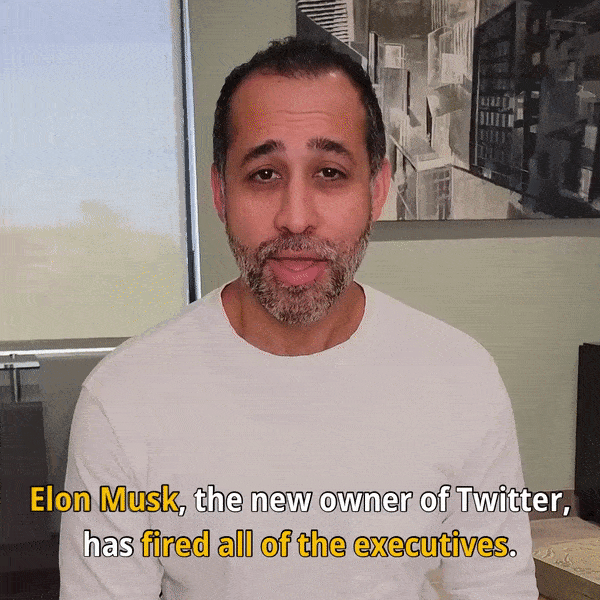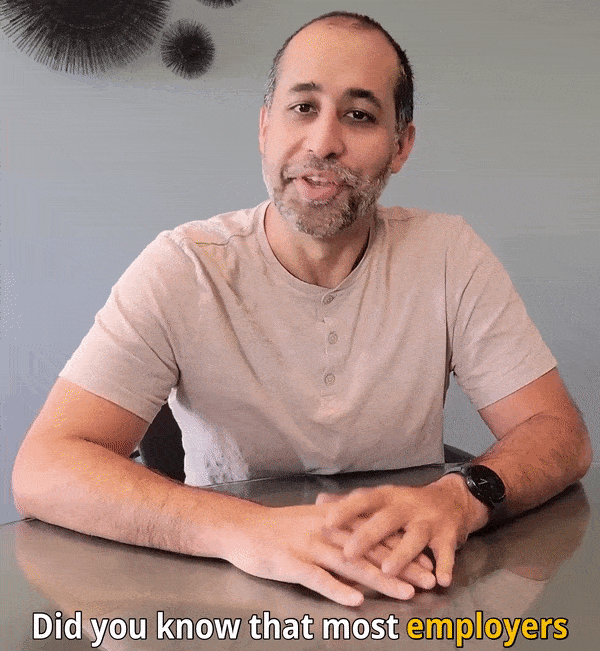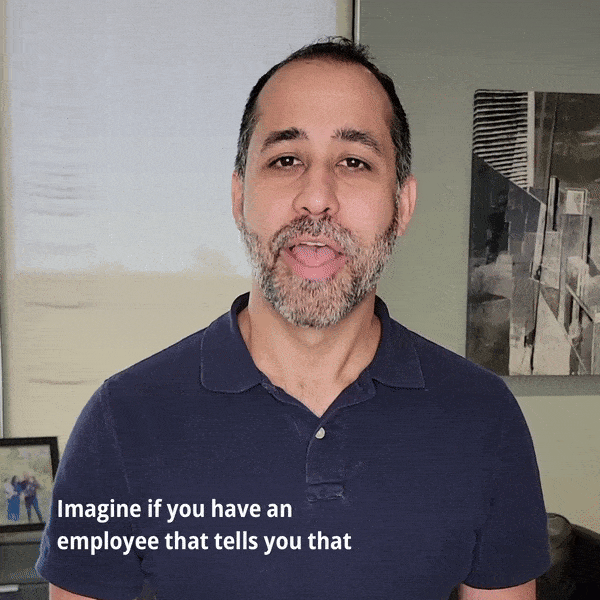It’s one of the most common areas in which business owners make a mistake when they hire a new worker. Must I classify this worker as an employee? Or could I classify their services as a position of an independent contractor? Each has significant consequential differences. If an employee, besides wages and tax withholdings, you will also have to abide by California’s strict wage orders dealing with overtime and breaks. If an independent contractor, you’re generally not liable for their accidents, or any tax liabilities. It’s quite common to misclassify a worker; at least 70% percent of the new employer clients we work with have made that mistake. It can sometimes be costly, but it doesn’t have to be.
Employee vs. Independent Contractor
Quick Quiz
At Green Hills Country Club, there are 10 full-time assistant golf professionals that work at the pro-shop during the week. They also teach up to six half-hour lessons per week during their normal working hours to members of the club. For golf lessons, the club issues a 1099 at one hourly rate and W-2 at a different hourly rate for working at the pro-shop.
How should they be classified? Is the worker an employee, independent contractor or both?
Answer: In a similar case, the California Division of Labor Standards Enforcement found that the assistant golf professionals were not independent contractors, but instead employees. Just because the golf professional only spends a small portion of their employment providing lessons and more time working in the pro shop, it does not change their relationship to one of an independent contractor.
It’s all about control
If you’re doing business in California, there are at least six different tests that are used to determine if a worker is an employee or independent. Each test is chosen depending on the purpose of the worker’s job with very subtle nuances. For example, the IRS and the Division of Labor Standards and Enforcement of California (DLSE) each have its own tests with slight differences. What is in common with all of these tests, however, is that the more you control the product of the worker, the more likely they should be classified as employees.
The IRS has its own view when trying to determine the status of a worker. This federal agency uses a 20-factor test. A few important areas the IRS looks at include where the work takes place, training, instructions given to the worker, right to terminate the relationship and method of compensation. Notice that many of these factors still deal with the element of control.
The Right to Control
What is very important to consider for a business owner is that it is not just the exercise of control, but whether you have retained the right to control the details of a worker’s performance or instead, have you given up that right? If you have not, then you have to classify the individual as an employee. Just because you might have drafted a written agreement calling a worker an independent contractor, that is not determinate in establishing an independent contractor relationship. An easy distinction to remember is that if they are one-time workers who do the job at a set or fixed price while doing the work for many companies, they are often viewed as independent contractors; however, in practice, these distinctions do not come so easy.
An Important Test: Borrello
The California Supreme Court calls it the “right of control” or “economic realities” test adopted from the case of S.G. Borello & Sons, Inc v Dept. of Industrial Relations (1989) 48 Cal.3d 341. This is the test used when trying to determine a worker’s status in the context of wage and hour laws, workers’ compensation, and Fair Employment and Housing Act (discrimination or harassment issues). What you, as an employer, need to take away from that case is whether you have the control or the right to control the worker in the type of work that is performed, and the manner and means in which it was performed. It will help guide you in the decision to classify a worker as an employee or independent contractor. DLSE begins with the idea that the worker is an employee based upon Labor Code Section 3357. However,that may not be in your business’ best interest, and that’s why you need to make sure every worker is classified correctly because it can hurt financially and open the business up to legal liability.
Tips to Determine Independent Contractor Status
There is no set definition of an independent contractor in the state of California, but generally, California sees an independent contractor as “not an employee.” The Fair Labor Standards Act, and decisions by state employment and enforcement agencies to determine the classification of an independent contractor have discussed many ways that workers can be justifiably be classified as an independent contractor.
Here’s a an attempt of an exhaustive list of factors from all the different tests to use when trying to determine if you have an independent contractor relationship:
- Needs very little control
- Distinct Occupation
- Occupation type is of a specialist without supervision
- Specialized skill
- Provides own tools or equipment
- Hired for a short period of time
- Paid by the job
- Duty not part of employer’s regular business
- Neither party sees relationship as employer-employee
- Hiring party not a business or benefits business
- Minimal instruction
- Minimal training
- Not personally rendered by worker
- Not a continuing relationship
- No set hours
- Full time not required
- Work off premises
- Minimal reporting
- No expense reimbursement
- Significant investment of equipment used
- Opportunity for profit or loss
- Hired by others
- Service available to general public
- No right to discharge or terminate at any time
 If your instructions to the worker do not include when, where, and how to work, then generally your working relationship is that of an independent contractor. It matters for your federal, state and local taxes as well. The IRS puts the degree of control and independence of the workers you hire into three categories: financial control, behavioral control, and the type of relationship of the parties.
If your instructions to the worker do not include when, where, and how to work, then generally your working relationship is that of an independent contractor. It matters for your federal, state and local taxes as well. The IRS puts the degree of control and independence of the workers you hire into three categories: financial control, behavioral control, and the type of relationship of the parties.
Quick Quiz
Drive Quickly rents a taxicab from Blue Cab, Co. for $175 dollars a day. Mr. Quickly pays for all the costs of the gas and maintenance on the taxi. At the end of each day, Quickly keeps all the fares from the people he picked up during the day. Blue Cab provides him a radio, a call dispatcher and numerous advertisements every month for the cab service in the town’s only newspaper, where both parties benefit from the publicity.
How would you classify Drive Quickly’s worker status with the cab company?
Answer: Most courts will see the driver as an independent contractor because he rents the taxicab from Blue Cab. Most importantly, the company has no financial or behavior control over his actions.
Why Does this Matter?
Are you on the hook?
Generally, an employer can be held financial responsible for the mistakes caused by their employees. Quite often when a worker’s negligent actions occur there can be dangerous results, which could open up your company to a lawsuit.
In California, Civil Code Section 2338 states that if one of your employees is negligent in the transaction of the business of the agency, any wrongful acts committed by your worker under their scope of employment opens your business to financial liability. It does not matter if you had nothing to do with your employee’s negligent act; generally you can be held vicariously liable to the injured party.
Paying for Independent Contractor’s Mistakes?
If you have an independent contractor doing work for the company, notwithstanding some exceptions, you will not be vicariously liable to others for their acts or omissions.
It does not mean a business owner is not liable for the tortuous acts of independent contractors. There are some exceptions to the rule that include work in ultra-hazardous activities or if the independent contractor is directed by a statute, a city ordinance, or state safety order that provide safeguards, precautions, or to maintain equipment to a specified condition.
If you fail to show reasonable care to retain a careful and competent contractor, and that worker physically injures another party, in some cases it could open the door for you to be sued. Plus, if your instructions led to his negligent act, in some cases your business could be responsible.
Quick Quiz
Dan Driver is an employee of Mo’s Pizza Shoppe in San Diego. One night, he was on a delivery, but before he went to the customer’s home, he stopped at a video store to pick up a game. While Dan Driver pulled into his spot at the video store, he dropped his cell phone on the vehicle’s floor. While he looked for it, he did not see Slow Sally walking through the crosswalk. He struck her in the company van, which caused her numerous injuries. As the owner of Mo’s Pizza Shoppe, are you liable for Slow Sally’s painful injuries caused by Dan Driver?
Answer: In this particular case, the owner could still be liable for his employee’s accident. An employer is liable when the employee is acting within the scope of his employment. It can be argued that Dan Driver was just on a “detour” when making his delivery and he is still within the scope of employment. Of course, Mo’s Pizza Shoppe is going to argue its best to suggest that Dan Driver was on a “frolic” and not acting within the scope of employment when he went on his own to purchase a video game. If he had hit her without any “detour” or “frolic,” that would be much clearer, and would hold Mo’s Pizza Shoppe financially responsible for the injuries.
Worker’s Legal Recourse
In California, wage and hour laws that deal with minimum wage, overtime, rest-breaks, anti-discrimination and retaliation laws only protect workers that are employees. Employees have an ally; DLSE helps workers make sure the law protects them when it comes to most areas of employment. If it’s determined they are an employee then they are generally eligible to file suit against a business under the Age Discrimination in Employment Act, The National Labor Relations Act, and the Fair Labor Standards Act to name a few. With the help of DLSE, many employees do not even need the assistance of attorneys that would often be an obstacle in most lawsuits. This state agency protection does not apply if the worker is classified as an independent contractor. They would have to go to court to make sure terms of the contract with the business are enforced.
Exempt vs. Non-Exempt
How to Classify Exempt Status?
In California, one of the key areas employers need to know when it comes to determining the status of a worker is 51% of their work should be “exempt work” and their monthly salary must be equivalent to at least twice the state minimum wage for full-time employment in order to be classified as exempt.
51% Percent of Work
When you are trying to determine if a worker is doing exempt work, an important number to know is 51. If the position in question has the worker spending at least 51% of their time during the workweek doing bona fide exempt work then they must be classified in that category. Additionally, if the worker is a rule-maker instead of a rule follower, then generally they are considered an exempt employee and therefore, not eligible for overtime compensation.
What is Exempt Work?
Generally, the only workers who are not eligible for overtime have to be in positions that require exercising discretion and making independent judgments that significantly impact the operations of the business. Just because the work is highly skilled, or the worker must act in a professional manner, or is extremely valued by other members of the department, does not generally mean workers are in the exempt category.
Professionally exempt jobs that require specialized education in professional occupations or licensed professional occupations are generally classified as exempt workers. Some of those professions that are exempt include lawyers and doctors; however, through professionals, registered nurses and teachers are non-exempt.
According to the Department of Labor’s Wage and Hour Division, to qualify for the learned professional employee exemption, all of the following tests must be met:
• The employee must be compensated on a salary or fee basis (as defined in the regulations) at a rate not less than $455 per week; (In California, it is twice the minimum wage on a 40 hour work week).
• The employee’s primary duty must be the performance of work requiring advanced knowledge, defined as work which is predominantly intellectual in character and which includes work requiring the consistent exercise of discretion and judgment;
• The advanced knowledge must be in a field of science or learning; and
• The advanced knowledge must be customarily acquired by a prolonged course of specialized intellectual instruction.
Another area that the federal government considers exempt is called “creative professional.” Some of those jobs include journalists, actors, musicians and their work involves invention, imagination, originality or talent in professions that depend on intelligence, diligence and accuracy.
Myth Buster
There is a myth that by making a worker on salary, there is no overtime requirement since by doing so, they are now exempt employees. As discussed, whether the worker gets paid salary is not determinative of exempt status. Non-exempt salaried workers are still entitled to receive overtime payments if they go over their set 40 hours for the week or 8 hours in one day (exceptions apply).
Quick Quiz:
You own a restaurant in San Diego serving classic Italian food in the heart of Little Italy. As the owner, you manage the cooks, the waitresses, and set the menu. You hire an Executive Chef on a monthly salary. The Executive Chef cooks during a 10-hour shift for dinner hours, while another cook works the lunch hours.
Is the Executive Chef owed any overtime?
Answer: Yes, the Executive Chef is a nonexempt employee. An executive chef could easily be considered an exempt employee, but in this case, “Executive Chef” is just a title. The Executive Chef is merely a cook in the restaurant. If the Executive Chef managed the staff, set the menu, bought stock, etc. then those would be exempt duties and the Executive Chef could be considered an exempt employee.
Fixing Misclassification on Federal Taxes
A simple misclassification with your city, state of California, and federal taxes could also open you up to stiff penalties. It’s one of the first areas we address when we work with a new business client, helping them to reclassifying their personnel. Quite often, we find workers that should not be listed as employees, but are on the books as such. In most cases, the financial damage has already been done to a company at that point
After reading this article, you may have realized that a worker you thought was an independent contractor was really an employee. The Internal Revenue Service has a new program that will allow employers to resolve past worker classification issues and achieve certainty under the tax law at a low cost by voluntarily reclassifying their workers.
Under the Voluntary Classification Settlement Program (VCSP), eligible employers can obtain relief from federal payroll taxes they may have owed in the past. The plan is available to businesses, some tax-exempt organizations, and government entities that have filed taxes in the past to treat their works as one class, and now want to classify the workers as employees of the business.
Now What?
At Pasha Law it’s our business to make sure your business is running at its best. If you have any worker classification question, please don’t hesitate to contact our office. Remember, when you bring your business to Pasha Law you will receive a quality of service unlike what you will find at any other business law firm. Pasha Law services California, New York, and Texas.
In case you would like to present this information to others, feel free to use this presentation on the topic: Employee v. Independent Contracts v. Exempt Employees v. Non-exempt Employees Presentation by Top Floor Legal.



![Unraveling the Workforce: Navigating the Aftermath of Mass Layoffs [e322]](https://www.pashalaw.com/wp-content/uploads/2023/07/Untitled-design-23-1024x723.png)
![Return to the Office vs. Remote: What Can Employers Legally Enforce? [e321]](https://www.pashalaw.com/wp-content/uploads/2023/01/Pasha_LSSB_321_banner-1024x723.jpg)


![California v. Texas: Which is Better for Business? [313]](https://www.pashalaw.com/wp-content/uploads/2021/07/Pasha_LSSB_CaliforniaVSTexas-1024x723.jpg)




![Employers vs. Employees: When Are Employment Restrictions Fair? [e318]](https://www.pashalaw.com/wp-content/uploads/2022/05/Pasha_LSSB_EmployeesVsEmployers_banner-1-1024x723.jpg)






![Law in the Digital Age: Exploring the Legal Intricacies of Artificial Intelligence [e323]](https://www.pashalaw.com/wp-content/uploads/2023/11/WhatsApp-Image-2023-11-21-at-13.24.49_4a326c9e-300x212.jpg)
![Unraveling the Workforce: Navigating the Aftermath of Mass Layoffs [e322]](https://www.pashalaw.com/wp-content/uploads/2023/07/Untitled-design-23-300x212.png)
![Return to the Office vs. Remote: What Can Employers Legally Enforce? [e321]](https://www.pashalaw.com/wp-content/uploads/2023/01/Pasha_LSSB_321_banner-300x212.jpg)
![Explaining the Hans Niemann Chess Lawsuit v. Magnus Carlsen [e320]](https://www.pashalaw.com/wp-content/uploads/2022/10/LAWYER-EXPLAINS-7-300x169.png)
![California v. Texas: Which is Better for Business? [313]](https://www.pashalaw.com/wp-content/uploads/2021/07/Pasha_LSSB_CaliforniaVSTexas-300x212.jpg)
![Buyers vs. Sellers: Negotiating Mergers & Acquisitions [e319]](https://www.pashalaw.com/wp-content/uploads/2022/06/Pasha_LSSB_BuyersVsSellers_banner-300x212.jpg)
![Employers vs. Employees: When Are Employment Restrictions Fair? [e318]](https://www.pashalaw.com/wp-content/uploads/2022/05/Pasha_LSSB_EmployeesVsEmployers_banner-1-300x212.jpg)
![Vaccine Mandates Supreme Court Rulings [E317]](https://www.pashalaw.com/wp-content/uploads/2022/02/WhatsApp-Image-2022-02-11-at-4.10.32-PM-300x212.jpeg)
![Business of Healthcare [e316]](https://www.pashalaw.com/wp-content/uploads/2021/11/Pasha_LSSB_BusinessofHealthcare_banner-300x212.jpg)
![Social Media and the Law [e315]](https://www.pashalaw.com/wp-content/uploads/2021/10/WhatsApp-Image-2021-10-06-at-1.43.08-PM-300x212.jpeg)
![Defining NDA Boundaries: When does it go too far? [e314]](https://www.pashalaw.com/wp-content/uploads/2021/09/Pasha_LSSB_NDA_WordPress-2-300x212.jpg)
![More Than a Mistake: Business Blunders to Avoid [312] Top Five Business Blunders](https://www.pashalaw.com/wp-content/uploads/2021/06/Pasha_LSSB_Blunders_WP-1-300x212.jpg)
![Is There a Right Way to Fire an Employee? We Ask the Experts [311]](https://www.pashalaw.com/wp-content/uploads/2021/02/Pasha_LSSB_FireAnEmployee_Website-300x200.jpg)
![The New Frontier: Navigating Business Law During a Pandemic [310]](https://www.pashalaw.com/wp-content/uploads/2020/12/Pasha_LSSB_Epidsode308_Covid_Web-1-300x200.jpg)
![Wrap Up | Behind the Buy [8/8] [309]](https://www.pashalaw.com/wp-content/uploads/2020/11/Pasha_BehindTheBuy_Episode8-300x200.jpg)
![Is it all over? | Behind the Buy [7/8] [308]](https://www.pashalaw.com/wp-content/uploads/2020/09/iStock-1153248856-overlay-scaled-300x200.jpg)
![Fight for Your [Trademark] Rights | Behind the Buy [6/8] [307]](https://www.pashalaw.com/wp-content/uploads/2020/07/Fight-for-your-trademark-right-300x200.jpg)
![They Let It Slip | Behind the Buy [5/8] [306]](https://www.pashalaw.com/wp-content/uploads/2020/06/Behind-the-buy-they-let-it-slip-300x200.jpg)
![Mo’ Investigation Mo’ Problems | Behind the Buy [4/8] [305]](https://www.pashalaw.com/wp-content/uploads/2020/05/interrobang-1-scaled-300x200.jpg)
![Broker or Joker | Behind the Buy [3/8] [304] Behind the buy - Broker or Joker](https://www.pashalaw.com/wp-content/uploads/2020/04/Joker-or-Broker-1-300x185.jpg)
![Intentions Are Nothing Without a Signature | Behind the Buy [2/8] [303]](https://www.pashalaw.com/wp-content/uploads/2020/04/intentions-are-nothing-without-a-signature-300x185.jpg)
![From First Steps to Final Signatures | Behind the Buy [1/8] [302]](https://www.pashalaw.com/wp-content/uploads/2020/04/first-steps-to-final-signatures-300x185.jpg)
![The Dark-side of GrubHub’s (and others’) Relationship with Restaurants [e301]](https://www.pashalaw.com/wp-content/uploads/2015/04/When-Competition-Goes-Too-Far-Ice-Cream-Truck-Edition-300x201.jpg)
![Ultimate Legal Breakdown of Internet Law & the Subscription Business Model [e300]](https://www.pashalaw.com/wp-content/uploads/2019/05/Ultimate-Legal-Breakdown-of-Internet-Law-the-Subscription-Business-Model-300x196.jpg)
![Why the Business Buying Process is Like a Wedding?: A Legal Guide [e299]](https://www.pashalaw.com/wp-content/uploads/2019/03/futura-300x169.jpg)
![Will Crowdfunding and General Solicitation Change How Companies Raise Capital? [e298]](https://www.pashalaw.com/wp-content/uploads/2018/11/Will-Crowdfunding-and-General-Solicitation-Change-How-Companies-Raise-Capital-300x159.jpg)
![Pirates, Pilots, and Passwords: Flight Sim Labs Navigates Legal Issues (w/ Marc Hoag as Guest) [e297]](https://www.pashalaw.com/wp-content/uploads/2018/07/flight-sim-labs-300x159.jpg)
![Facebook, Zuckerberg, and the Data Privacy Dilemma [e296] User data, data breach photo by Pete Souza)](https://www.pashalaw.com/wp-content/uploads/2018/04/data-300x159.jpg)
![What To Do When Your Business Is Raided By ICE [e295] I.C.E Raids business](https://www.pashalaw.com/wp-content/uploads/2018/02/ice-cover-300x159.jpg)
![General Contractors & Subcontractors in California – What you need to know [e294]](https://www.pashalaw.com/wp-content/uploads/2018/01/iStock-666960952-300x200.jpg)
![Mattress Giants v. Sleepoplis: The War On Getting You To Bed [e293]](https://www.pashalaw.com/wp-content/uploads/2017/12/sleepopolis-300x159.jpg)
![The Harassment Watershed [e292]](https://www.pashalaw.com/wp-content/uploads/2017/12/me-2-300x219.jpg)
![Investing and Immigrating to the United States: The EB-5 Green Card [e291]](https://www.pashalaw.com/wp-content/uploads/2012/12/eb-5-investment-visa-program-300x159.jpg)
![Responding to a Government Requests (Inquiries, Warrants, etc.) [e290] How to respond to government requests, inquiries, warrants and investigation](https://www.pashalaw.com/wp-content/uploads/2017/10/iStock_57303576_LARGE-300x200.jpg)
![Ultimate Legal Breakdown: Employee Dress Codes [e289]](https://www.pashalaw.com/wp-content/uploads/2017/08/Ultimate-Legal-Breakdown-Template-1-300x159.jpg)
![Ultimate Legal Breakdown: Negative Online Reviews [e288]](https://www.pashalaw.com/wp-content/uploads/2017/06/Ultimate-Legal-Breakdown-Online-Reviews-1-300x159.jpg)
![Ultimate Legal Breakdown: Social Media Marketing [e287]](https://www.pashalaw.com/wp-content/uploads/2017/06/ultimate-legal-breakdown-social-media-marketing-blur-300x159.jpg)
![Ultimate Legal Breakdown: Subscription Box Businesses [e286]](https://www.pashalaw.com/wp-content/uploads/2017/03/ultimate-legal-breakdown-subscription-box-services-pasha-law-2-300x159.jpg)
![Can Companies Protect Against Foreseeable Misuse of Apps [e285]](https://www.pashalaw.com/wp-content/uploads/2017/01/iStock-505291242-300x176.jpg)
![When Using Celebrity Deaths for Brand Promotion Crosses the Line [e284]](https://www.pashalaw.com/wp-content/uploads/2017/01/celbrity-300x159.png)
![Are Employers Liable When Employees Are Accused of Racism? [e283] Racist Employee](https://www.pashalaw.com/wp-content/uploads/2016/12/Are-employers-liable-when-an-employees-are-accused-of-racism-300x159.jpg)
![How Businesses Should Handle Unpaid Bills from Clients [e282] What to do when a client won't pay.](https://www.pashalaw.com/wp-content/uploads/2016/12/How-Businesses-Should-Handle-Unpaid-Bills-to-Clients-300x159.png)
![Can Employers Implement English Only Policies Without Discriminating? [e281]](https://www.pashalaw.com/wp-content/uploads/2016/11/Can-Employers-Impliment-English-Only-Policies-Without-Discriminating-300x159.jpg)
![Why You May No Longer See Actors’ Ages on Their IMDB Page [e280]](https://www.pashalaw.com/wp-content/uploads/2016/10/IMDB-AGE2-300x159.jpg)
![Airbnb’s Discrimination Problem and How Businesses Can Relate [e279]](https://www.pashalaw.com/wp-content/uploads/2016/09/airbnb-300x159.jpg)
![What To Do When Your Amazon Account Gets Suspended [e278]](https://www.pashalaw.com/wp-content/uploads/2016/09/What-To-Do-When-Your-Amazon-Account-Gets-Suspended-1-300x200.jpg)
![How Independent Artists Reacted to Fashion Mogul Zara’s Alleged Infringement [e277]](https://www.pashalaw.com/wp-content/uploads/2016/08/How-Independent-Artists-Reacted-to-Fashion-Mogul-Zaras-Alleged-Infringement--300x159.jpg)
![Can Brave’s Ad Replacing Software Defeat Newspapers and Copyright Law? [e276]](https://www.pashalaw.com/wp-content/uploads/2016/08/Can-Braves-Ad-Replacing-Software-Defeat-Newspapers-and-Copyright-Law-300x159.jpg)
![Why The Roger Ailes Sexual Harassment Lawsuit Is Far From Normal [e275]](https://www.pashalaw.com/wp-content/uploads/2016/07/WHY-THE-ROGER-AILES-SEXUAL-HARASSMENT-LAWSUIT-IS-FAR-FROM-NORMAL-300x159.jpeg)
![How Starbucks Turned Coveted Employer to Employee Complaints [e274]](https://www.pashalaw.com/wp-content/uploads/2016/07/iStock_54169990_LARGE-300x210.jpg)
